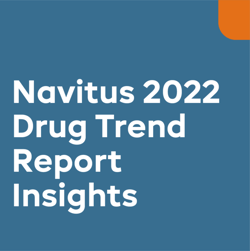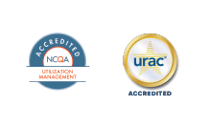Unable to join our AHIP webinar last week? Find out what you missed!
Webinar Recap: A Comprehensive Approach to Managing Specialty Drug Costs
Last week during the America’s Health Insurance Plans (AHIP) webinar, Navitus’ Laura Jester and Nicholas Skalitzky shared their industry insight on how plans can leverage pharmacy benefit management (PBM) tools to help manage specialty drug spend, improve care and reduce costs.
When it comes to specialty medication costs, there’s more to manage than meets the eye. Approximately 50% of specialty drug spend falls under the medical benefit, and as spend continues to increase, it’s becoming more important than ever to manage all aspects of specialty, including the medical benefit portion.
To kick things off, Laura outlined the challenges to managing all specialty drug spend that many plans are facing and shared some possible solutions.
Challenge #1: Variance of Drug Reimbursement
Specialty drug administration can occur in various locations, including hospitals, physician’s offices, infusion sites or member’s homes. Under the medical benefit, drug reimbursement can be highly variable within and across sites of care, which can make it difficult to effectively capture and control costs.
Nick shared how analytics can help plans overcome medical reimbursement challenges by identifying more cost-effective places for patients’ drug administration. For example, site of care analytics can help plan sponsors pinpoint high-cost providers and identify which members are using them. Without a mechanism to steer utilization to the most cost-effective providers, plans risk paying too much. However, by shifting coverage of specialty medications from the medical benefit to the pharmacy benefit, plan sponsors can take advantage of pharmacy benefit strategies, such as prior authorization (PA), that can direct members to more cost-effective sites of care.
Did you know that drug administration at a hospital could cost 6 times more than it would at a provider’s office?
Challenge #2: Lack of Transparency
Laura explained how medical claims are processed using J-codes, which lack standardization and limit visibility. For example, several medications can use the same J-code. On the other hand, drugs that don’t fit under a specific J-code can use an ‘unclassified drug’ code. These practices limit visibility to the true spend and can make monitoring and controlling costs near impossible.
By shifting specialty medication coverage from the medical benefit to the pharmacy side, plan sponsors can get access to standardized national drug codes (NDC) that will provide greater clarity into utilization and costs and can be used to better manage pharmacy benefit expenses.
Challenge #3: Lack of Insights Across Benefits
So how do plans know if they are getting a good deal? As Laura outlined, billed charges under the medical benefit can be arbitrary and are completely in the hands of each provider. The variance can often lead to inconsistent drug valuation and plan sponsors end up only getting insight into half of their specialty spend. Using Average Sale Price (ASP) for data benchmarking can be limited in scope, particularly to Part B drugs, thus the silo of separation between medical and pharmacy benefits still exists.
While it’s not perfect, Average Wholesale Price (AWP) is a universally accepted brand drug list that’s price is based on acquisition cost. Nearly all brand drugs reimbursed using AWP methodology are under the pharmacy benefit. Because it is so widely used, it represents a common benchmark for drug value, which is helpful to identify how specialty spend performs in both the pharmacy and medical benefit.
Challenge #4: Inconsistent Clinical Management
Preferring lower-cost drugs is a central tenant of sound pharmacy benefit management. So why is the same not happening for specialty drugs under the medical benefit?
Plans often utilize PBM Pharmacy and Therapeutics (P&T) Committees to regularly review products for their clinical efficacy and to assess the financial dynamics as part of their pharmacy benefits strategy. Nick explained how to apply this strategy to coverage and clinical reviews of more specialty products. By implementing more pharmacy benefit processes, plan sponsors can direct members to clinically appropriate, yet more cost-effective alternatives within a particular specialty drug class and lower their expenses.
By adopting one of Navitus’ recommended preferred product strategies, one client reduced spend in a drug class by 25%.
Want to learn more? View the webinar below.






